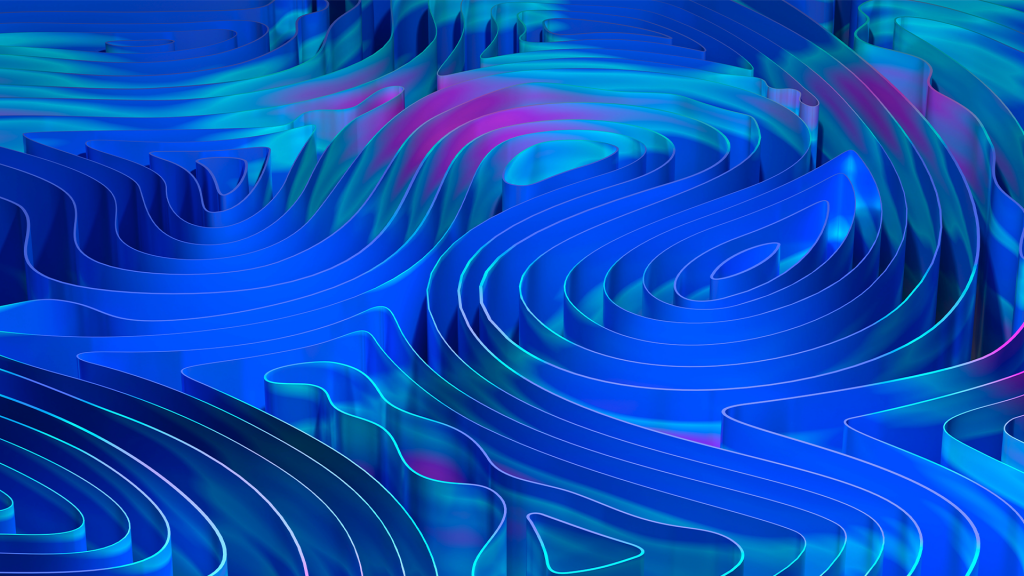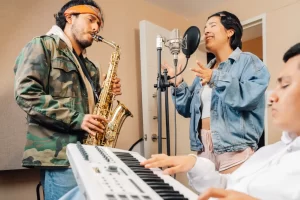The fusion of music and visual art has been a long-standing tradition, from the iconic album covers of the vinyl era to the captivating music videos of the digital age. Now, a new visual language is emerging in the music industry: Motion Artwork. This innovative form of expression combines dynamic visuals with music, creating a multi-sensory experience that captivates audiences and adds depth to musical compositions. As digital platforms continue to dominate the music scene, Motion Artwork is proving to be a powerful tool for artists to communicate their musical narratives and engage with their fans in a novel way. This blog post delves into the world of Motion Artwork, exploring its evolution, significance, and potential to reshape the visual language of music.
The Evolution of Visual Language in Music
The interplay between music and visuals has significantly shaped the music industry’s evolution. In the early days, album covers were the primary visual component, offering a static image that encapsulated the essence of the music within. These covers evolved from simple designs to intricate artworks, becoming iconic symbols that represented the musicians and their work.
With the advent of television, music videos revolutionized the visual language of music. They provided a platform for artists to tell stories, adding a new layer of engagement to the auditory experience. The most impactful music videos combined compelling narratives with striking imagery, enhancing the music’s appeal.
The digital era brought another shift with the rise of Motion Artwork. Leveraging advanced digital technologies, Motion Artwork creates dynamic, moving visuals that accompany music. Unlike traditional music videos, these are often abstract and non-narrative, focusing on creating an aesthetic experience that complements the music.
As digital platforms like Spotify and Apple Music dominate the music scene, Motion Artwork offers a unique way for artists to stand out, providing a distinct visual identity that matches their music. This evolution of visual language in music continues to unfold, promising more innovative forms of visual expression as technology advances.
Understanding Motion Artwork
Motion Artwork represents the next evolution in the visual language of music. It’s a form of visual expression that uses dynamic, moving images synchronized with music to create a multi-sensory experience that captivates audiences. Unlike traditional music videos, which tend to tell stories or portray scenes, Motion Artwork is often abstract and non-narrative. It focuses on conveying the mood, rhythm, and atmosphere of a piece of music through visual means.
Motion Artwork leverages the power of digital technologies, particularly computer-generated imagery (CGI) and animation, to produce visuals that are not only stunning but also deeply intertwined with the music. Every beat, note, and melody can be reflected in the motion of the visuals, creating a seamless integration between the auditory and visual elements.
This innovative form of visual expression has gained traction in the digital era, particularly with the prevalence of streaming platforms like Spotify and Apple Music. These platforms have embraced Motion Artwork, offering artists a space to showcase these dynamic visuals alongside their music. This not only enhances the listener’s experience but also provides artists with a unique way to express their creative vision and establish a distinct visual identity.
Moreover, Motion Artwork is not just limited to the digital realm. Artists are increasingly incorporating it into their live performances, using large screens and projectors to display the moving visuals as they perform, adding an extra layer of spectacle to their shows.
In essence, Motion Artwork is redefining the visual language of music. It provides a new avenue for artistic expression, allowing musicians to visually represent their music in a way that is engaging, immersive, and reflective of the digital age. As technology continues to evolve, we can expect to see even more innovative and exciting developments in the world of Motion Artwork.
The Role of Motion Artwork in Music Marketing
In today’s digital era, music marketing goes beyond just the audio. Visual elements, particularly Motion Artwork, play a crucial role in appealing to audiences and promoting an artist’s work. This dynamic form of visual expression allows artists to provide a multi-sensory experience that is not only captivating but also deeply reflective of their music.
One of the key advantages of Motion Artwork is its ability to create a unique visual identity for an artist or a specific piece of music. Just as album covers once provided a visual cue for a record, Motion Artwork offers a modern, digital equivalent that can be easily shared and promoted across various platforms. This helps artists stand out in a saturated market, attracting more listeners and increasing their visibility.
In addition, Motion Artwork can be a powerful tool for storytelling. Even though it’s often abstract and non-narrative, the movement and rhythm of the visuals can evoke emotions and convey a message that complements the music. This creates a deeper connection between the artist and the audience, enhancing the overall listening experience.
The use of Motion Artwork in live performances adds an extra layer of spectacle, making concerts more engaging and memorable. It not only enhances the performance but also generates buzz, encouraging more people to attend future shows.
Motion Artwork has become an integral part of music marketing in the digital age. By combining auditory and visual elements, it offers a compelling way for artists to promote their music, engage their audience, and carve out a unique space in the music industry.
The Making of Motion Artwork
Creating Motion Artwork is a multi-step process that involves both artistic vision and technical expertise. The process begins with the conceptualization stage where artists, along with their creative team, envision what they want to visually express. This could be based on the mood of the music, its lyrical content, or simply the artist’s personal aesthetic. The aim is to create a visual narrative that complements and enhances the music.
Once the concept is finalized, the next step involves creating a storyboard. This outlines the sequence of imagery and how it will sync with the music. It serves as a roadmap for the animation process, guiding the timing and movement of the visuals.
The actual creation of Motion Artwork is typically done using digital technologies like computer-generated imagery (CGI), 3D modeling, and animation software. Artists meticulously craft each frame, ensuring every visual element aligns with the corresponding musical notes. The visuals are then rendered and compiled into a fluid, moving artwork.
It’s also important to note that Motion Artwork isn’t a one-size-fits-all solution. Each piece is unique, tailored to the specific piece of music it accompanies. This customization allows artists to create a distinct visual identity that resonates with their audience.
Lastly, once the Motion Artwork is complete, it’s integrated into the music track, ready to be released on digital platforms or used in live performances. The result is a captivating multi-sensory experience that adds depth and dimension to the listening experience. The making of Motion Artwork is indeed a blend of creativity, technology, and music, redefining the way we engage with music.
Future Trends in Motion Artwork
As we look towards the future, Motion Artwork is poised to continue its evolution, driven by technological advancements and changing consumer behaviors. Here are a few trends likely to shape the future of this dynamic art form.
- Virtual Reality (VR) and Augmented Reality (AR): With the rise of VR and AR technologies, Motion Artwork could become even more immersive. Artists might create 360-degree visual experiences that allow audiences to interact with the music in entirely new ways. This could transform live performances, making them more engaging and memorable.
- Artificial Intelligence (AI): AI has already begun to shape various aspects of the music industry, and it’s likely to influence Motion Artwork as well. AI could be used to automate certain parts of the creation process or to generate unique visuals based on the music’s data, such as tempo, rhythm, and mood.
- Personalization: As consumers increasingly seek personalized experiences, artists might begin to create customizable Motion Artwork. Listeners could potentially alter the visuals to suit their preferences, creating a more personalized listening experience.
- Integration with Social Media: Given the emphasis on visual content in social media, we can expect to see a greater integration of Motion Artwork into these platforms. Artists might create short, looping visuals to accompany their music on platforms like Instagram, TikTok, or Twitter, enhancing their online presence and engagement.
- Environmental Storytelling: As societal issues like climate change become more pressing, artists may use Motion Artwork to convey important messages and engage audiences in meaningful conversations. The combination of music and moving visuals can be a powerful tool for raising awareness and inspiring action.
To Sum It Up
Motion Artwork has emerged as a powerful tool in the realm of music marketing, bridging the gap between sound and visual art. It provides artists with a unique platform to express their creativity, enhance their brand identity, and connect with audiences on a deeper level. The making of Motion Artwork is a testament to the fusion of art, technology, and music, presenting an innovative approach to the traditional listening experience.
As we look towards the future, it’s clear that Motion Artwork will continue to evolve and push creative boundaries. Technological advancements in VR, AR, and AI, along with trends towards personalization and social media integration, will drive new possibilities for this dynamic art form. Moreover, its potential role in environmental storytelling highlights the power of Motion Artwork to not only entertain but also inspire change.
Motion Artwork is much more than just a marketing tool or a visual accompaniment to music. It’s a medium of expression, a catalyst for engagement, and a vehicle for storytelling. As we navigate through the digital age, one can only anticipate the exciting ways in which Motion Artwork will continue to redefine our interaction with music.




